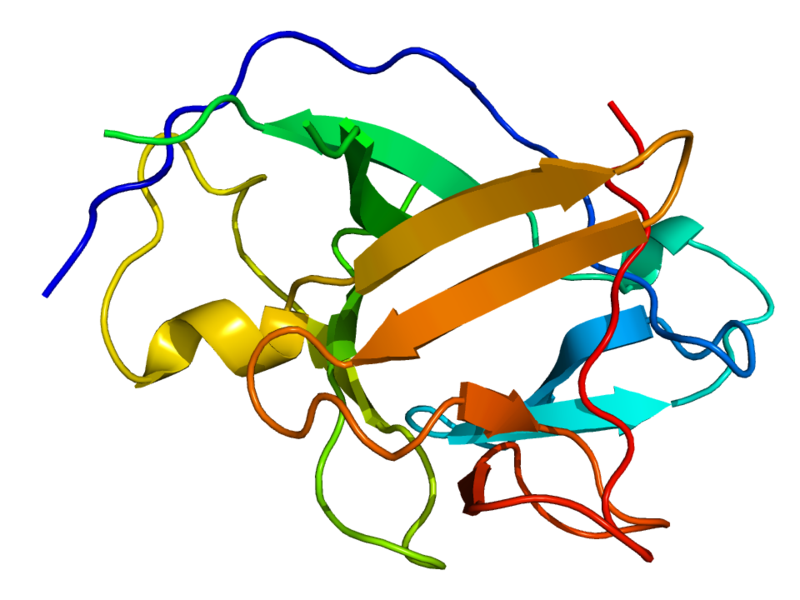Key Difference – Endotoxin vs Pyrogen
Pyrogen is a substance that induces fever after released into the blood circulation. They are produced as the products of microbial metabolic processes. Pyrogens are produced by microorganisms such as bacteria, moulds, and yeasts. Viruses and other metabolic products also act as pyrogens. Endotoxins are an important type of pyrogens. They are poisonous substances produced by gram negative bacteria. They are lipopolysaccharides and are located in the outer membrane of the bacterial cell. Therefore, they serve as a part of the bacterial cell. The key difference between endotoxin and pyrogen is that endotoxin is a lipopolysaccharide found in the outer membrane of gram negative bacteria while pyrogen is a polypeptide or polysaccharide which induces fever when released into circulation.
CONTENTS
1. Overview and Key Difference
2. What is an Endotoxin
3. What is a Pyrogen
4. Similarities Between Endotoxin and Pyrogen
5. Side by Side Comparison – Endotoxin vs Pyrogen in Tabular Form
6. Summary
What is an Endotoxin?
The outer membrane of gram negative bacteria is primarily composed of lipopolysaccharides. Lipopolysaccharide molecules are the endotoxins produced by the bacterium. Lipopolysaccharide molecule has three components: lipid A, polysaccharide and O antigens. The toxicity of the endotoxin is associated with the lipid A component of the lipopolysaccharide. Endotoxins are considered as a part of the bacterial cell. They are released during the bacterial cell wall disintegration. Minute amounts of endotoxins can be released from the actively growing gram negative bacterial cultures. The common endotoxin producing bacterial species are Escherichia coli, Salmonella, Shigella, Pseudomonas, Neisseria, Haemophilus influenzae, Bordetella pertussis and Vibrio cholera.

Figure 01: Endotoxins
Endotoxins are heat stable molecules with larger molecular weights. Hence, they cannot be destroyed by boiling. Powerful oxidizing chemicals are used to destroy endotoxins. Endotoxins have low specificity, low antigenicity, and low potency. However, endotoxins show high pyrogenicity. Endotoxins cannot be converted to toxoids.
What is a Pyrogen?
Pyrogen is a substance or agent which can induce fever or raise the body temperature when released or introduced into the blood circulation. Pyrogens are produced by different agents such as bacteria, viruses, fungi, etc. They can be endogenous or exogenous. Some pyrogens are low molecular weight proteins that are produced by phagocytic leukocytes in response to external pyrogens. Exogenous pyrogens have external origins. They can be exotoxins produced by bacteria or other microbial products. Endotoxins are a type of important pyrogens which are lipopolysaccharides. Antigen antibody complexes are also a kind of pyrogens which are exogenous. Some viruses act as pyrogens. Incompatible blood and blood products are also considered as pyrogens which induce fever.

Figure 02: Interleukin 1 is a Major Endogenous Pyrogen
Pyrogens include polypeptides and polysaccharides. Usually, a pyrogen has a high molecular weight. They are mostly originated as the products of metabolic processes of microorganisms. However, there are pyrogens which do not have a microbial origin. For example, synthetic polynucleotides which are considered as pyrogens are not originated from microorganisms.
What are the Similarities Between Endotoxin and Pyrogen?
- Endotoxins and pyrogens induce fever.
- Both are produced by bacteria.
- Both pyrogen and endotoxins are heat stable.
What is the Difference Between Endotoxin and Pyrogen?
Endotoxin vs Pyrogen | |
| Endotoxin is a part of gram negative bacterial cell wall which is poisonous. | Pyrogen is any kind of fever-inducing substance or agent. |
| Composition | |
| Endotoxin is a lipopolysaccharide. | Pyrogen can be a polypeptide or polysaccharide. |
| Production | |
| Endotoxins are produced by bacteria, especially gram negative bacteria. | Pyrogens are produced by bacteria, viruses, moulds, and yeasts. |
| Origins | |
| Endotoxins are endogenous. | Pyrogens can be either endogenous or exogenous. |
Summary – Endotoxin vs Pyrogen
Pyrogen is a substance or agent that produces fever, upon release to the blood circulation. Pyrogens are produced by different types of microorganisms such as bacteria, moulds, yeasts, and viruses. Most of the toxins produced by bacteria are fever-inducing substances such as exotoxins, neurotoxins, endotoxins. Endotoxins are a type of pyrogens produced by gram negative bacteria. They are toxic lipopolysaccharides. They are components of the outer membrane of gram negative bacteria. The main difference between endotoxin and pyrogen is that endotoxin is a lipopolysaccharide which causes different negative impacts including fever while pyrogens are polysaccharides or polypeptides which cause fever.
Download PDF Version of Endotoxin vs Pyrogen
You can download PDF version of this article and use it for offline purposes as per citation notes. Please download PDF version here Difference Between Endotoxin and Pyrogen.
References:
1. WI, Kenneth Todar Madison. “Bacterial Endotoxin .” Bacterial Endotoxin. N.p., n.d. Web. Available here. 03 July 2017.
Image Courtesy:
1. “LPS” By Mike Jones – Own work (CC BY-SA 3.0) via Commons Wikimedia
2. “2ILA” By Boghog2 (talk) – Own work (Original text: self-made) (Public Domain) via Commons Wikimedia
ncG1vNJzZmivp6x7pbXFn5yrnZ6YsqOx07CcnqZemLyue8OinZ%2Bdopq7pLGMm5ytr5Wau26xzZ2mraeonrturc2dZK%2BrXaXGs7vGnqVo